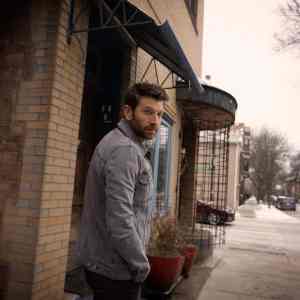One of the biggest things most people could do to improve their lyric writing is to really master the art of rewriting. For my whole career, I’ve heard the saying, “Good songs are written but great songs are rewritten.” I have found that to be true in most cases. Sometimes, a song just falls out of the sky and it’s perfect by the end of the session. But, most of the time, they require a little more work to become great!
Videos by American Songwriter
I’m going to give you a practical checklist of some common issues that can be fixed in the rewriting process and I’m also going to give you a way to look at rewriting that I think will help you be more effective. So, let’s dive in!
Let’s start with some of the most common problems that I see when I mentor writers:
- Pronouns On The Loose – Almost weekly, I encounter a song in which the writer is talking TO someone in the first verse, using pronouns like “you”, “us”, and “we.” Then, all of the sudden in the chorus, they start talking ABOUT the person, using pronouns like “she” and “her.” This is really confusing to a listener, but it’s an easy fix. Just make sure in the re-writing process that you are consistently using the same way to reference the person you are singing to. Stick with talking to or talking about throughout the song for the most clear communication.
- Time Jumpers – Another common ailment is moving through time in a confusing way. Recently, I was mentoring someone and looking at one specific song. The first line was in future tense. The second line was looking back. The third line was in the present moment. There was no way to follow that train of thought. The simplest form of time movement is to just keep things linear. Let events in the song unfold in sequence, as they occurred in your story. Sometimes, that method doesn’t work and you do have to tell something happening in the moment and then look back. Just make a note to look at the way you move time in each song as you re-write and you can catch a lot of those time movement errors before your song leaves your hands.
- Missing backstory – I don’t know how many times I have told a writer, “I don’t understand what is going on here”, only to have them give me a 10 minute description of the story behind the song. Of course, after the 10 minute explanation, it all makes sense, but often the writer didn’t tell me ANY of that information in the song. Always make sure that you have given the listener enough information to keep them engaged and following along with your story. At times, I write out the crucial plot elements I have to introduce in verse one so that I can make sure I cover them all.
- The “Twin” Verses – One of the most common mistakes writers make is just making verse two a twin of verse one. Writers come up with a way to set up the first chorus, then they just say the same thing with different words for verse 2. If your second verse is the same message as verse one re-worded, your song isn’t going anywhere. Like I talked about in my American Songwriter article “Blueprinting,” your second verse needs to take the song somewhere new.
If you check on those four things each time you go back to rewrite and spruce up a song, you’ll fix a big proportion of the major problems that occur in lyric writing.
Now, let’s talk about a new way of looking at writing and rewriting. I like to think of the writing process as one in which I’m wearing my “creator” hat. And, I think of the re-writing process as me putting on my “editor” hat.
My creator is the fun, off the wall guy who dreams up crazy opening lines and super cool lyrics. I like to give him 90% of the power in the original writing room. My editor is still in the room, but he’s only looking at those four issues we discussed earlier. If I’m getting WAY off track, or leaving something important out, he can speak up. Otherwise, he waits his turn.
When I rewrite, my editor gets the power. This is his chance to bring out the red pen and mark things up. After he’s pointed out all of the ways the creator got out of control, the creator comes back in to creatively fix the problems. Then it goes back to the editor for final review.
I have found that keeping those two roles separate (if only in my head) helps stop my editor from slowing down the flow when inspiration is coming. And it stops my creator from arguing for his favorite “really cool” lines that only make sense to him.
So, try out the different hats and let your creator and editor work together to make your song the best it can be.
Marty Dodson is a seven-time, No. 1 hit songwriter who has had songs recorded in country, rock, pop, bluegrass, K-Pop, J-Pop and musical theatre. His greatest songwriting achievement is knocking Psy out of the #1 spot in South Korea with his song “Bounce”. He co-founded SongTown, the world’s leading songwriter education site, with fellow hit writer Clay Mills and is passionate about teaching people to write better songs. Visit SongTown.com for 10 free videos!
